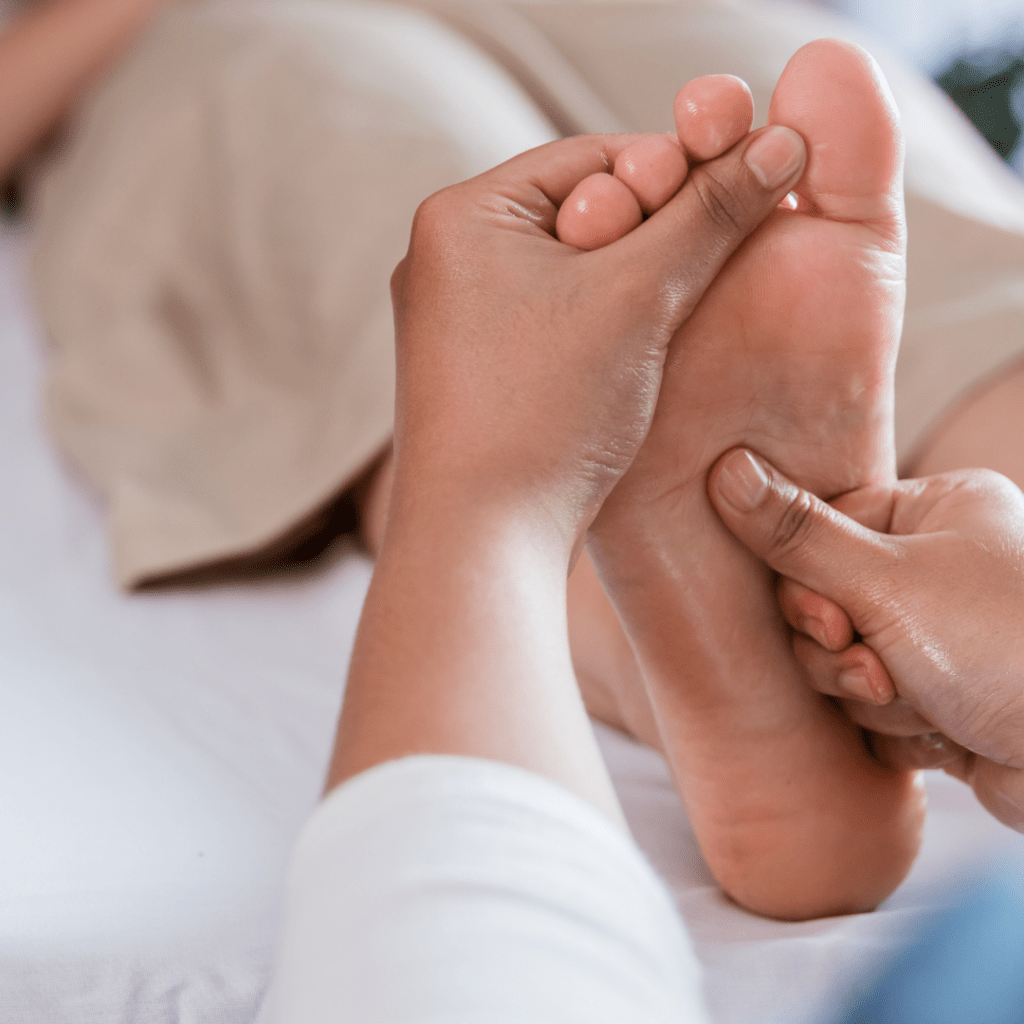Reflexology is based on the philosophy that the entire body is mapped onto the feet. However, this doesn’t explain simply, how touching the feet can affect the body in such a profound way.
The feet are a sensory-rich area of the body. We have around 7000 nerve endings in the feet. By stimulating these nerve endings through the power of touch, a reflexologist sends signals from the feet up to the brain, via the spinal cord, and thus encompassing the whole body. A typical reflexology session lasts around 45 minutes, so imagine how many of these signals are sent, received and processed throughout that period of time!
These neurological pathways are opened up and in some ways reawakened, particularly if the client tends to keep feet covered in socks and shoes. This is a lot of stimulation for the brain to receive, and therefore creates a profound state of relaxation as the body relaxes into the sensation of gentle touch.
It is generally accepted that gentle touch stimulates the production of oxytocin, our love hormone, helping us emotionally. And relaxation switches on the parasympathetic nervous system (rest and digest), which is the Yin to the Yang of the sympathetic nervous system (fight and flight).
Ultimately the power of touch, stimulating the sensory-rich feet, over the period of time, creates profound relaxation, promotes much healing and a return to homeostasis.


One thought on “How does reflexology work?”